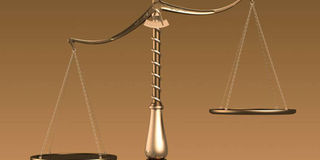The kilogramme is dead. Long live the kilogramme!

A weighing scale. The SI originated at the end of the 18th century with just the metre and the kilogramme. PHOTO | FILE | COURTESY
Since 1889, Le Grand K, a sleek cylinder of platinum-iridium metal, has ruled from its underground vault in Paris. An absolute monarch, it was the very definition of one kilogramme of mass. Scientists from around the world made pilgrimages to it, bringing along their national kilogramme standards to weigh in comparison.
“The mother ship is never wrong,” said Robert Vocke Jr., a chemist at the National Institute of Standards and Technology in Gaithersburg, Maryland.
OVERTHROW
No longer. Friday, in a small conference centre just steps from the Palace of Versailles, several dozen nations voted to overthrow Le Grand K and to redefine the kilogramme and three other standard units of measure: the ampere, for electrical current; the kelvin, for temperature; and the mole, which describes the amount of a chemical substance.
The vote fulfils an 18th-century dream. Henceforth, all seven units in the International System of Units, otherwise known as the SI, will no longer be defined by material objects and instead will be defined only by abstract constants of nature.
“This arc of history started before the French Revolution and now, I think we’ve finished the journey,” said Stephan Schlamminger, a NIST physicist. The “democratisation of the units,” he said, is now complete.
The SI originated at the end of the 18th century with just the metre and the kilogramme. The idea was to standardise the basic units of trade and scientific measurement. After all, for one kilogram of gold coins to hold universal value, everyone has to agree on the exact definition of one kilogramme.
By 1875, 17 nations had signed the Treaty of the Metre in Paris, which set international standards for the metre and the kilogramme. The metre was defined as the distance between two scratches on a hallowed bar of platinum-iridium metal.
The standard kilogramme was Le Grand K. Both artefacts would be stored under lock and key at the International Bureau of Weights and Measures, with copies distributed to various countries.
“People called it ‘for all times, for all people,'” said Schlamminger.



